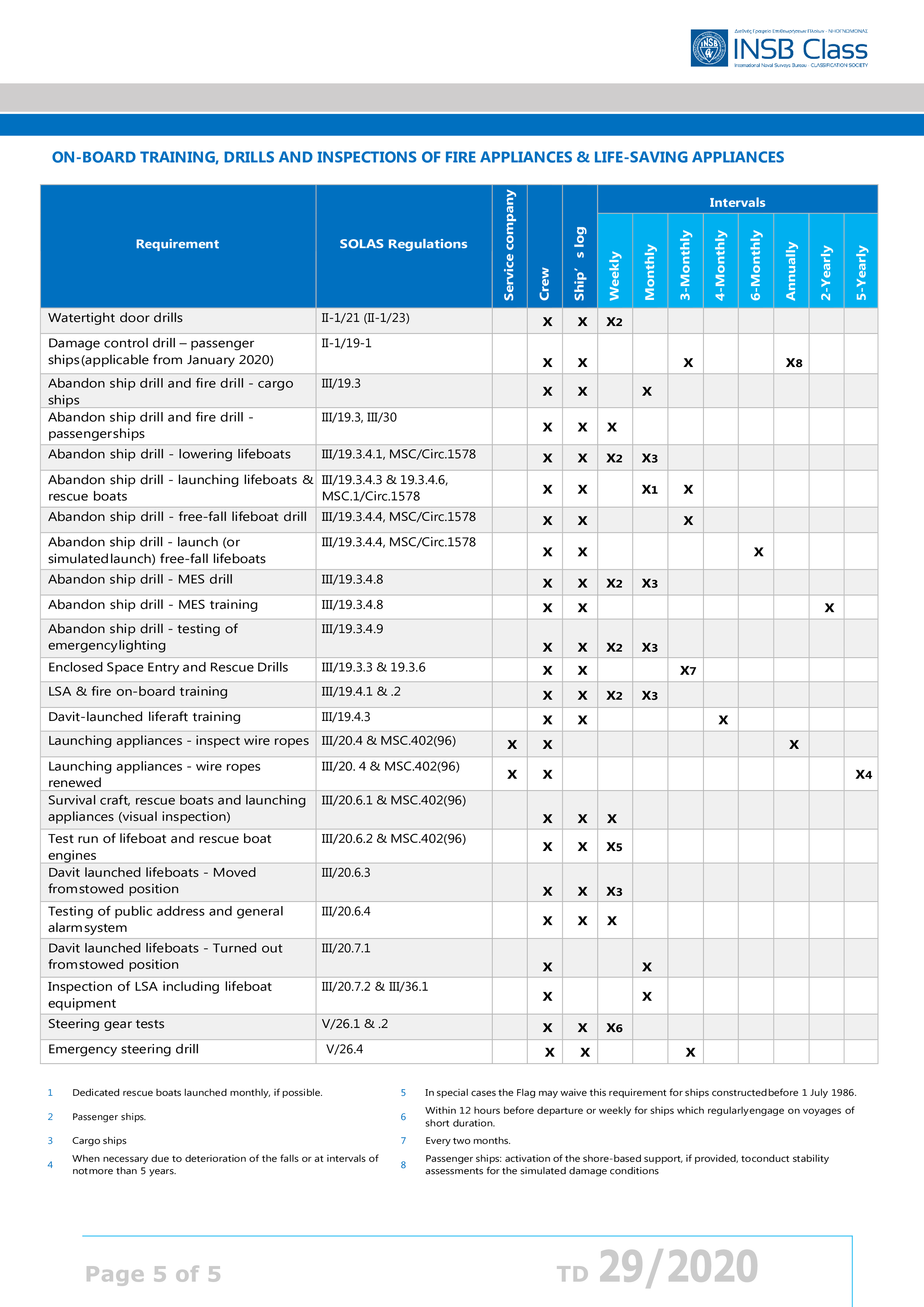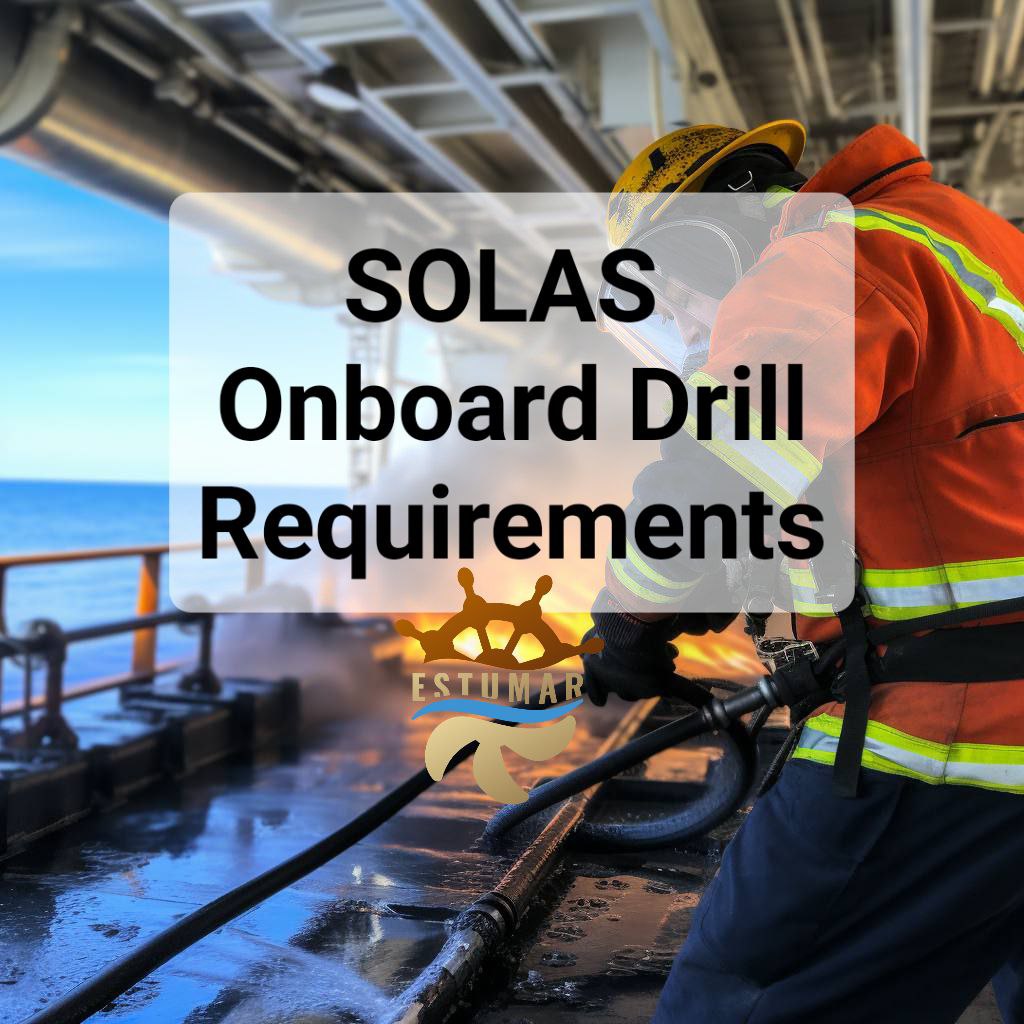Drill frequency
- Holding frequent drills makes the crew more familiar with the life-saving appliances on board their ships and increases their confidence that the appliances will work and will be effective in an emergency.
Drills must be safe
- Abandon ship drills should be planned, organized and performed in accordance with relevant shipboard requirements of occupational safety and health so that the recognized risks are minimized.
- Drills provide an opportunity to verify that the life-saving appliances are working and that all associated equipment is in place, in good working order and ready for use.
- Before conducting drills, it should be checked that the lifeboat and its equipment have been maintained in accordance with the ship's maintenance manuals and any associated technical documentation, as well as noting all the precautionary measures necessary.
- Abnormal conditions of wear and tear or corrosion should be reported to the responsible officer immediately.
Emphasis on learning
- Drills should be conducted with an emphasis on learning and be viewed as a learning experience, not just as a task to meet a regulatory requirement to conduct drills.
- During drills, care should be taken to ensure that persons on board familiarize themselves with their duties and with the equipment.
- If necessary, pauses should be made during the drills to explain especially difficult elements.
Planning and organizing drills
- SOLAS requires that drills shall, as far as practicable, be conducted as if there was an actual emergency.
- In preparing for a drill, those responsible should review the manufacturer's instruction manual to ensure that a planned drill is conducted properly.
- Lessons learned in the course of a drill should be documented and made a part of the follow-up shipboard training discussions and the planning of the next drill session.
- The lowering of a boat with its full complement of persons is an example of an element of a drill that may, depending on the circumstances, involve an unnecessary risk. Such drills should only be carried out if special precautions are observed.
- The entire drill should, as far as possible, be carried out, while ensuring that the drill can be performed in such a way that it is safe in every respect.
- Elements of the drill that may involve unnecessary risks need special attention or may be excluded from the drill.
- Lessons learned in the course of a drill should be documented and made a part of the follow-up shipboard training discussions and the planning of the next drill session.
- The lowering of a boat with its full complement of persons is an example of an element of a drill that may, depending on the circumstances, involve an unnecessary risk.
- Such drills should only be carried out if special precautions are observed.
Drills
- Every crew member shall participate in at least one abandon ship drill and one fire drill every month.
- The drills of the crew shall take place within 24 h of the ship leaving a port if more than 25% of the crew have not participated in abandon ship and fire drills on board that particular ship in the previous month.
- When a ship enters service for the first time, after modification of a major character or when a new crew is engaged, these drills shall be held before sailing.
- It is a legal requirement that every crew member who is assigned to emergency duties is familiar with those duties before the ship sails. This requirement may also be found in the STCW Convention and in the requirements of the ISM code.
- In passenger ships, whenever passengers are to be on board for 24 hours or longer, there must be a muster of passengers within 24 hours of their joining at which time they are to be instructed in the use of lifejackets and the actions to be taken in any emergency. In general this muster should take place, whenever possible, before the ship sails.
- Whenever a new passenger or passengers join there shall be a passenger briefing before the ship sails made through the public address system or a similar effective system and supplemented if appropriate by video display facilities and similar.
- The briefing should cover the items required in the emergency instructions for passengers and be in English and also in any other language likely to be used by a majority of the passengers.
Lifeboats lowered by means of falls
- During drills, everyone participating should be alert for potentially dangerous conditions or situations and should bring them to the attention of the responsible person for appropriate action.
- When drills are to be performed with persons on board the lifeboat, it is recommended that the boat be lowered and recovered without any persons on board first to ascertain that the arrangement functions correctly.
- In this case, the boat should then be lowered into the water with only the number of persons on board necessary to operate the boat.
- To prevent lashings or gripes from getting entangled, proper release should be checked before swinging out the davit.
Free-fall lifeboats
- The monthly drills with free-fall lifeboats should be carried out according to the manufacturer's instructions, so that the persons who are to enter the boat in an emergency are trained to embark the boat, take their seats in a correct way and use the safety belts; as well as being instructed on how to act during launching into the sea.
- When the lifeboat is free-fall launched as part of a drill, this should be carried out with the minimum personnel required to manoeuvre the boat in the water and to recover it.
- The recovery operation should be carried out with special attention, bearing in mind the high-risk level of this operation.
- Where permitted by SOLAS4 , simulated launching should be carried out in accordance with the manufacturer's instructions, taking due note of the Guidelines for simulated launching of free-fall lifeboats.
SOLAS regulation III/19.3.3.4 requires that lifeboats for free-fall launching be launched by free-fall every six months with its assigned operating crew on board. During such launching, only the persons who are to manoeuvre the boat in the water should be on board. The same SOLAS regulation gives the Administration a possibility of extending the interval between the launching of lifeboats by free-fall to 12 months provided that an arrangement is provided for simulated launching every six months.
Conduct of drills – typical simulated launching sequence (SOLAS regulation III/19)
- Check equipment and documentation to ensure that all components of the lifeboat and launching appliance are in good operational condition.
- Ensure that all personnel involved in the drill are familiar with the operating manuals, posters and signs.
- Ensure that the restraining device(s) provided by the manufacturer for simulated launching are installed and secure and that the free-fall release mechanism is fully and correctly engaged.
- Establish and maintain good communication between the assigned operating crew and the responsible person.
- Disengage lashings, gripes, etc. installed to secure the lifeboat for sea or for maintenance, except those required for simulated free-fall.
- Participating crew board the lifeboat and fasten their seatbelts under the supervision of the responsible person.
- All crew disembark the lifeboat.
- Return the lifeboat to the condition it was in prior to step provided in paragraph 3.4. Ensure that the lifeboat is returned to its normal stowed condition. Remove any restraining and/or recovery devices used only for the simulated launch procedure.
Marking, periodical operation and inspection of watertight doors, etc., in passenger ships
- Drills for the operating of watertight doors, sidescuttles, valves and closing mechanisms of scuppers, ash-chutes and rubbish-chutes shall take place weekly.
- In ships in which the voyage exceeds one week in duration a complete drill shall be held before leaving port, and others thereafter at least once a week during the voyage.
- All watertight doors, both hinged and power operated, in main transverse bulkheads, in use at sea, shall be operated daily.
- On-board training in the use of the ship’s fire-extinguishing systems and appliances shall be planned and conducted in accordance with the provisions of regulation III/19.4.1.
- Fire drills shall be conducted and recorded in accordance with the provisions of regulations III/19.3 and III/19.5.
Helicopter facilities
The purpose of this regulation is to provide additional measures in order to address the fire safety objectives of this chapter for ships fitted with special facilities for helicopters. For this purpose, the following functional requirements shall be met:
- helideck structure must be adequate to protect the ship from the fire hazards associated with helicopter operations;
- fire-fighting appliances shall be provided to adequately protect the ship from the fire hazards associated with helicopter operations;
- refuelling and hangar facilities and operations shall provide the necessary measures to protect the ship from the fire hazards associated with helicopter operations; and
- operation manuals and training shall be provided.
A helideck shall be provided with both a main and an emergency means of escape and access for fire fighting and rescue personnel. These shall be located as far apart from each other as is practicable and preferably on opposite sides of the helideck.
Operations manual and fire-fighting service
- Each helicopter facility shall have an operations manual, including a description and a checklist of safety precautions, procedures and equipment requirements. This manual may be part of the ship's emergency response procedures.
- The procedures and precautions to be followed during refuelling operations shall be in accordance with recognized safe practices and contained in the operations manual.
- Fire-fighting personnel, consisting of at least two persons trained for rescue and fire-fighting duties, and fire-fighting equipment shall be immediately available at all times when helicopter operations are expected.
- Fire-fighting personnel shall be present during refuelling operations. However, the fire-fighting personnel shall not be involved with refuelling activities.
- On-board refresher training shall be carried out and additional supplies of fire-fighting media shall be provided for training and testing of the equipment.
Fire Drills
- Fire drills have caused accidents, and for this reason all elements involving unnecessary risks should be left out of such drills. Here are some examples:
- When watertight doors are closed, there might be a risk of persons getting jammed in the doors that are closing with great force. For this reason, watertight doors should not be closed by means of remote control during drills.
- The remote controlled release of fire doors can also involve a risk of personal injury. Before fire doors are remote released, a warning hereof should, insofar as possible, be announced on the public address system.
- Some ships are provided with an arrangement for the recovery of a hoist stretcher, for example from the pump room. Training of the recovery of a hoist stretcher should be carried out without persons on the stretcher. A similar load can be used instead.
- Darkening the glass of the smoke-helmet can, for example, simulate reduced visibility caused by smoke. This makes it possible for a person who can see to walk next to the fire-fighter with reduced visibility and interfere if the fire-fighter is about to get into trouble.

- Tags:
- Security
- Safety
- Risk
- Navigation
- Competence

Comments